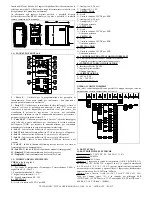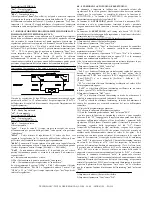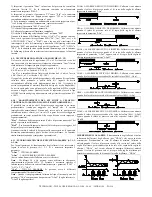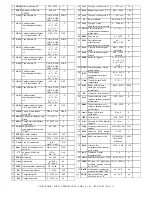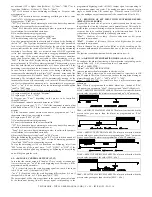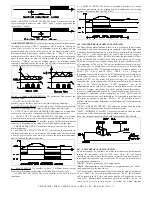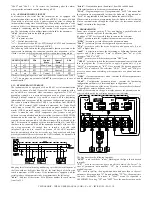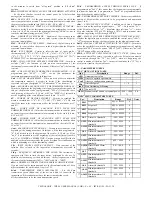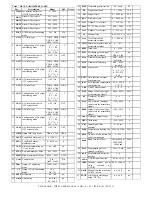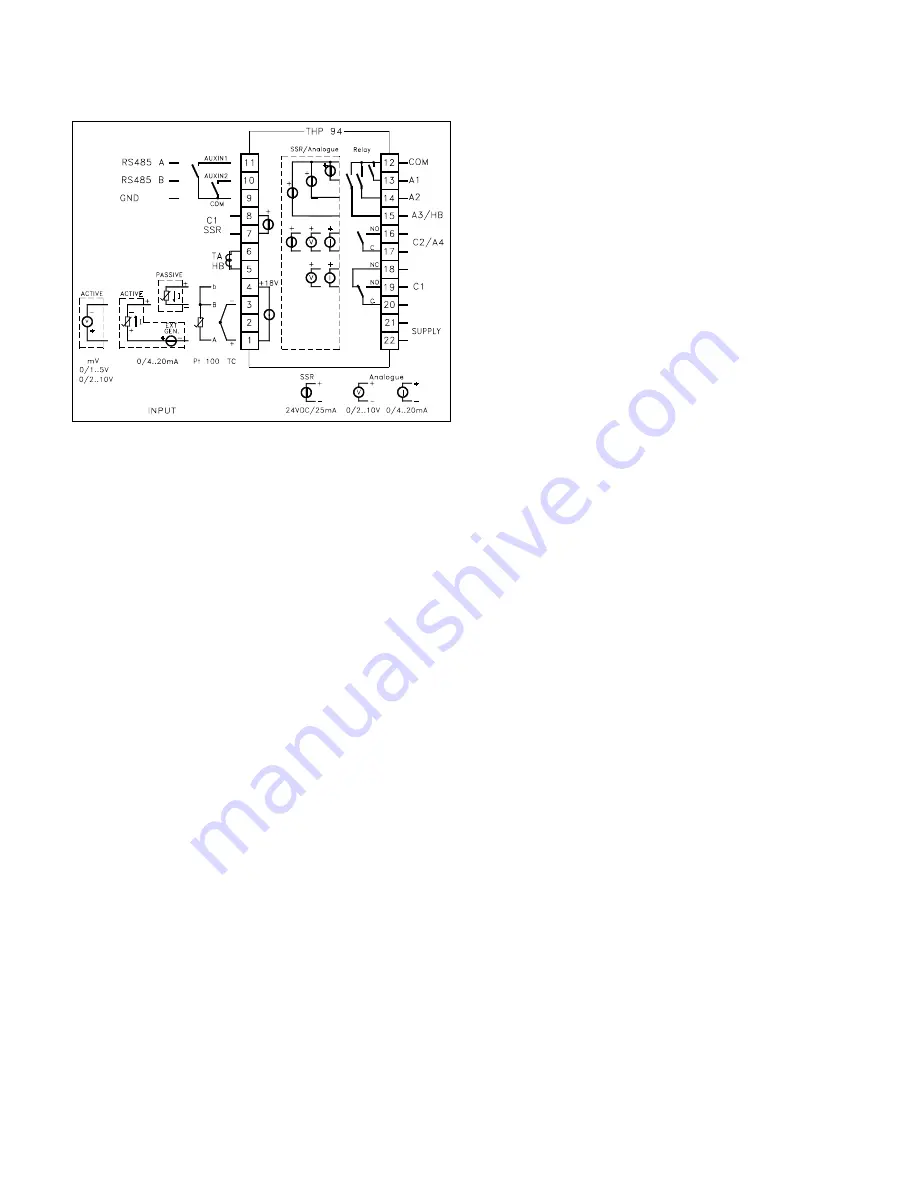
screened, it has to be connected on the ground with only one side. It is
advisable to check that the parameters are those desired before connecting
the outputs to the actuators so as to avoid malfunctioning . Whenever a
failure of the instrument could cause dangerous or damaging situations, it
should be kept in mind that the plant has to be provided with additional
devices to ensure the safety.
4 - OPERATING MODE
4.1 - CONTROL STATE
The controller can assume 3 different states : automatic control
(rEG),
deactivated control
(OFF)
and manual control
(OPLO).
The instrument is able to switch from one state to the other :
- From the keyboard, selecting the desired state, into "SEL" menu
- Through the digital auxiliary inputs AUXIN, if the input function (par.
"rEar") allows it.
-
Automatically (into "OFF" in case of anomaly conditions and into "rEG"
at the end of Autotuning execution.)
At the switching on, the instrument goes automatically to the state it had in
the moment of the switching off.
AUTOMATIC CONTROL (rEG)
The automatic control state is the normal functioning state of the
regulator.
In the automatic control state, on the upper display is visualised the
process variable measured, while on the lower display is visualised the
active Set point. During the automatic control it's possible to visualise the
control power on the lower display pushing key "UP" (if the par. "SPOL"
is not programmed as "yES")
DEACTIVATED CONTROL (OFF)
The instrument can goes into "OFF" state or intentionally or automatically
in case of anomaly conditions. When it's in "OFF" state, the control and
the relatives outputs are not working. The alarms are activated or
deactivated depending on what programmed on par. "ALno". In the "OFF"
state, on the upper display is visualised the process variable measured,
while on the lower display is visualised the writing "OFF" flashing.
MANUAL CONTROL (OPLO)
It's possible to manually program the control percentage given by the
output regulator. To active this possibility it's necessary, first of all, to
program par. "EnOL" as "yES". To start the manual control it's necessary
then to get into the "SEL" menu, select "OPLO" and push "P" key. Now on
the upper display will flash led "MAN", while on the lower display will
appear the control percentage given by the output on that moment. This
power percentage can be selected, as any other parameter, using the
frontal keys placed on the front panel. When the value is the desired one,
just push "P" key so that the selected power percentage will be supplied to
the load. To turn the regulator into the automatic control, select par.
"rEG" in "SEL" menu. When the
instrument is used to control motorised
actuators, the manual control happen in the following way :
- Pushing "LEFT" key is controllable the actuator opening
- Pushing "UP" key is controllable the actuator closing
During all the time of the manual control activation, on the lower display
appears the writing 3Pt or "OPEn" while is pushed "LEFT" key or "CLoS"
while is pushed "UP" key.
4.2 - ACTIVE SET POINT SELECTION
The instrument permits to store up to 4 different controlling Set point and
then to select which one has to be active. The maximum Set point number is
determined by the par. "nSP" in "SEL" menu.
The Set point to be activated
can be selected :
- From the keyboard through parameter "SPn", in "SEL" menu
- From the keyboard through "Up" key if par. "SPOL" = "yES"
- Through the digital auxiliary inputs AUXIN, if the input function (par.
"rEar") allows it.
When "nSP" = 1, par. "SPn" doesn't appear in "SEL" menu.
In "OPEr" menu, do appear Set point "SEt1", "SEt2", "SEt3", "SEt4",
depending on the maximum Set point number selected on par. "nSP".
Note
: in all the following examples the Set point is indicated as "SEt1",
anyway the instrument will behave depending on the Set point selected as
active.
4.3 - CONFIGURATION OF THE MEASURE INPUT
The instruments configured in factory, with temperature sensor input,
accept signals coming from thermocouples B, E, J, K, L, N, R, S T, U, from
thermoresistances Pt100 IEC and PT100 JIS, and furthermore from mV
signals (0..50). The choice between these kind of input types is possible by
means of par. "SEnS". If it's chosen a thermocouple, it's possible to
eliminate the automatic compensation of the cold junction temperature
(par. "ECJC" = "yES"). In this case it's necessary to set on par. "tCJC" the
temperature on which is subjected the cold junction. In case it's chosen the
0..50 mV signal input, it's necessary to set on par. "StrS" the value that the
instrument has to visualise at 0 mV and on par. "EnsS" the value that the
instrument has to visualise at 50 mV. As regard the instruments with
normalised analogue signals input it's necessary instead to set, first of all,
on par. "ScAL" the scale beginning used. Will be, then, programmed on the
following parameter :
- "SSLo" if it's desired to use the scale beginning equal to 0 (0 mA if the
input is 0/4...20 mA, or 0V if the input is 0/1...5V or 0/2...10V)
-"SSHi" if it's desired to use the scale beginning different from 0 (4 mA if
the input is 0/4...20 mA, 1V if the input is 0/1...5V or 2 V if the input is
0/2...10V).
It is necessary then to set on parameter "StrS" the value that the instrument
has to visualise on the scale beginning (0/4 mA, 0/1V or 0/2V) and on
parameter, "EndS" the value that the instrument has to visualise on the
scale end (20 mA, 5V or 10V)
.
4.4 - ON/OFF CONTROL (C1)
The ON/OFF control mode acts setting parameter "Cont" = "OnFS" or =
"OnFa" and works on C1 output depending on the set point ("SEt1"), on
the functioning mode ("FunC") and on the hysteresis ("HSEt")
programmed. The instruments proceed with a ON/OFF regulation mode,
with symmetric hysteresis if programmed as "OnFS" or with asymmetric
hysteresis if programmed as "OnFa". The regulator, therefore, behave in
the following mode : in case of inverse action or heating mode ("HEAt"),
deactivates C1 output when the process value reaches the value [SEt1 +
HSEt] in case of symmetric hysteresis or [SEt1] in case of asymmetric
hysteresis and than actives it again when temperature goes under the value
[SEt1 - HSEt] ; on the contrary, in case of direct action or cooling mode
("CooL"), deactivates C1 output when the process value reaches the value
[SEt1 - HSEt] in case of symmetric hysteresis or [SEt1]in case of
asymmetric hysteresis and than actives it again when temperature goes
upper than the value [SEt1 + HSEt].
TECNOLOGIC - THP 94
USER MANUAL (I - GB) - Vr. 05 - ISTR 01195 - PAG. 14


